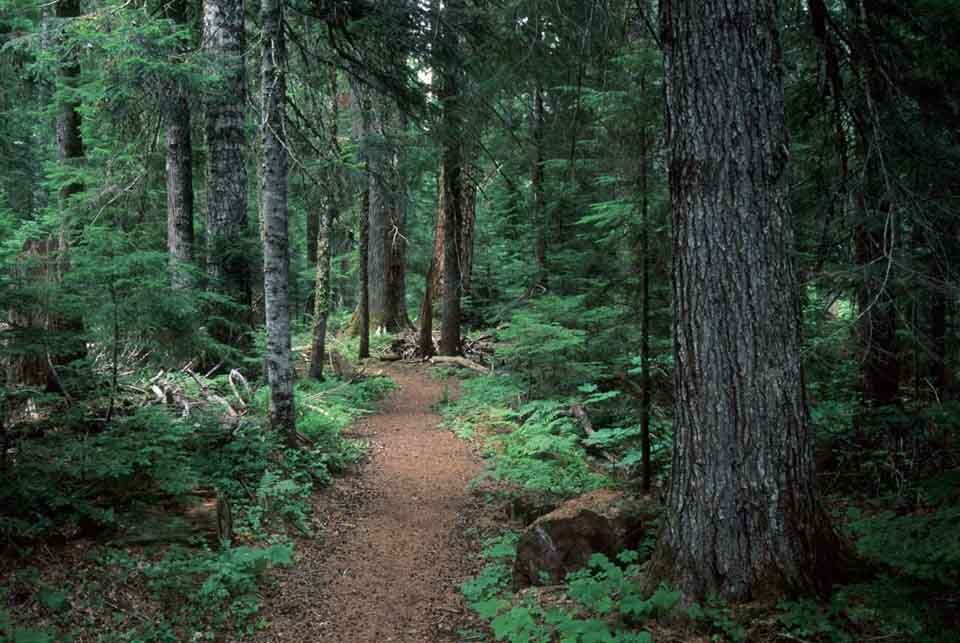Tree Sitters Protect Southern Oregon’s Old Growth Forests From The Treetops

JOSEPHINE COUNTY, Ore. — Protesting logging of old-growth trees in the dense forests off the I-5 in Josephine County, Oregon, up a few miles of winding dirt roads, protesters have taken positions high up in the trees to prevent marked old-growth trees from being felled.
UPDATE: Southern Oregon Old Growth Forest Road Plans Canceled: Tree Sitters Claim Victory
UPDATE 2: Tree Sitters Return For A Second Protest In Southern Oregon
The protesters, or self-described “forest defenders,” have been camping for a week in a forest managed by the Bureau of Land Management (BLM) which is part of the agency’s 11,000-acre Poor Windy project.
Old Growth Forest Protection Competes With Wildfire Management
Kyle Sullivan, a BLM spokesperson, confirmed that the agency follows the legal requirements in managing Southern Oregon forest as set out in the:
- 1937 Oregon and California Revested Lands Sustained Yield Management Act (the O&C Act): requires that the area be managed for permanent timber production.
- BLM’s 2016 Southwest Oregon Resource Management Plan: imposes thinning out of forests to reduce fuel for wildfire and also sets quantities of timber sales.
Sullivan said that over 51% of forests in southwest Oregon are overly dense and need treatment. The BLM designs help reduce competition between trees to open up the canopy. However, research shows that old-growth trees are more resilient to fire.
The conservation director of Ashland-based environmental nonprofit Klamath-Siskiyou Wildlands Center (KS Wild), George Sexton, thinks the Poor Windy project will increase wildfire risk. While BLM sees its actions as vital to treating forests overgrown through decades of fire suppression, Sexton claims BLM’s efforts to reduce the forest canopy and their planting of Douglas fir trees could raise fire hazards.
Southern Oregon’s Old Growth Forests Protections Criticized
Despite an executive order signed in 2022 by President Biden directing federal agencies to develop policies to protect old-growth forests and inventory them, certain conservation groups think enough is not being done at the federal level. Almost 40 organizations sent a letter to Interior Secretary Deb Haaland and BLM Director Tracy Stone-Manning recently insisting that the Poor Windy project be canceled.
Legal action is also being taken, resulting in the BLM dropping their plans for around 10,000 acres after a judge found they would be harmful to the spotted owl habitat. A complaint against the BLM seeking to protect old-growth forests in the Rogue Gold Forest Management Project has also recently been filed by environmental groups. Sexton of KS Wild, one of the parties to the suit, said, “The BLM needs to faithfully implement old-growth protections, which they’re not doing right now.”
Sullivan explained that they work hard to design timber sales and access roads to have the least amount of impact. The agency says that their timber operators don’t want to cut those larger trees because it’s a safety issue and increases the costs. He indicated that there are barely any mills left in Oregon with the capacity to accept old-growth-sized logs. Sullivan said that big trees that are felled are left on the forest floor, transforming into wildlife habitat.
Old Growth Forest Logging Protesters Are Getting Up High
At the foothills of the Cascades, the forest defenders are camping in tents and hammocks and one activist who identified herself only as “Taylor,” gave some insight into their protest. She confirmed that the trees with orange markings are all old-growth trees. According to the BLM, trees between 36 to 40 inches in diameter, depending on the region, and over 174 years old are seen as old-growth trees and are generally off-limits to logging.
From a platform, elevated 100 feet high at the top of a huge Ponderosa pine with a thin band of orange paint around its trunk, an activist displays a big banner reading, “No Old Growth Logging in a Climate Crisis.”
The protester said through a radio that they wanted to send a message to the BLM that they were being watched. The group says that BLM has plans to put a road through the area where they are protesting, and old-growth trees will be felled in the process. KS Wild’s Sexton says that the road plan is a loophole that will see old-growth trees older than our nation being felled.
Meanwhile, the forest defenders plan to stay a while but have not indicated how long. Despite the windy weather in Poor Windy, they say they will stay as long as it takes.

President Biden signed the executive order to protect old growth two years ago. One would think that a year or so would be enough time so government policy changes, to respond to a worldwide existential crisis, could be implemented. Yet here is the BLM, operating per usual with no concessions that old growth is anything but timber to be hauled out of the forest and used for lumber! At what point do federal agencies acknowledge that the American public does NOT want OLD GROWTH disturbed any further. It provides a deep carbon sink, is a precious community resource, has the best conditions for wildlife— and there is no evidence that “thinning” the forest does anything but create drier conditions and disturbed, less fertile soil.
Hurrah for the forest sitters who are pointing out this egregious abuse that continues despite laws against it. Thank you for helping our children to survive climate change and for supporting wildland. It truly seems that agencies have followed the most profitable course for them at the expense of the forest they are guardians of. There is no way that old growth can be re-grown in time for it to be helpful in the climate crisis, it must be SAVED and PROTECTED by agencies in charge of it now.